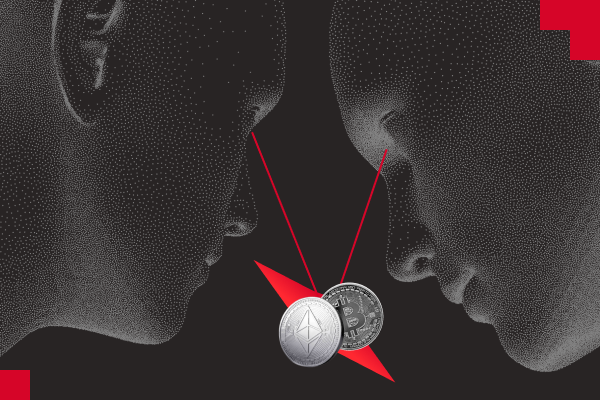Trading Signals 05/02 – 09/02
Rare currency pairs – does the profit opportunity justify the risk?

Rare currency pairs, commonly called “exotic”, provide traders with a variety of unique profit making opportunities that are often much greater than the popular low-spread pairs like EUR/USD. However, these exotic pairs come with their own sets of risks that investors should understand before diving in.
Here are some of the pros and cons of investing in rare currency pairs and a few pairs you might want to keep an eye on in 2023, but first, let’s clarify exactly what I mean by “rare” or “exotic” currency pairs.
Typically, most investors are very familiar with the big boys like EUR/USD, USD/JPY, GBP/USD, etc. You probably see the USD pattern, and for good reason. For now and the foreseeable future, the US dollar is the reserve currency of the world and when it is coupled with those other major economic zones and their currency, it becomes easily traded because of the high demand.
Minor currency pairs, also called “cross” pairs, are made up of those other economic zones that exchange between each other such as EUR/GBP, AUD/JPY, CHF/JPY, etc.
Exotic currency pairs are made up of countries outside of the big boys, like the Russian ruble, Chinese yuan, or Mexican peso. These nations still have significant economies, but there is less overall demand for their currency. Exotic pairs almost always include the US dollar although the EUR/TRY (Turkish lira) pair is an exception worth noting.
Benefits of Trading Exotic Currency Pairs
For traders looking to make solid returns on their investments, rare currency pairs can provide excellent windows of profit. The movement of these pairs can be huge and yield equally large amounts of returns for investors willing to be patient.
The key, as with any other investment, is finding the best entry point. However, because the interest rates in most of these pairs is high, the carryovers can be a source of income itself. Futures positions in these pairs are also opportunistic.
Some examples of profitable volatility from last year include USD/TRY and USD/RUB. In the first case, the lira went from just under 15 to the US dollar in May to over 17 by June and nearly 19 by the end of 2022. In the latter case, Russia’s attack on Ukraine and subsequent Western sanctions caused a massive spike for the ruble in February of 2022. The ruble went from 77 to the US dollar to 135 in March before returning to 77 in April.
Risks to Consider
With great opportunity comes increased risk. The world can be an unpredictable place, and as such, the currencies of some economies can lose significant value overnight. Exotic pairs can take unforeseen turns that may require longer periods of time to recover and, in some cases, may not recover at all.
Adding to that challenge is that these pairs have less liquidity, making it more difficult to exit a position to minimize losses. It is important to fully utilize money management techniques and automated Stop Loss features to assist you. Just beware of exiting too soon as well.
Again, trading exotics is much like all trading in that having a clear entry and exit strategy is necessary to help alleviate some of the risks. Understanding the countries and regions involved will also go a long way in reducing your investment exposure.
Three Exotic Pairs that will Likely Provide Trading Opportunities in 2023
USD/RUB
This pair has traditionally enjoyed a solid inverse relationship to global oil prices. Keep in mind that these are the traded prices for Brent and West Texas Intermediate (WTI) and not the price of Russian oil (Urals or Arctic grades). Essentially, when the price of Brent goes up, the Russian ruble historically has gotten stronger (less rubles needed to buy a US dollar).
That being said, the current sanctions regime against Russia is the largest in history and investors are still trying to “figure it out” so to speak. Expect to see some volatility with severe corrections in the USD/RUB pair if the price of Brent increases or decreases significantly.
USD/CNY (Chinese yuan)
China is in the midst of increasing Western pressure on its economy. The US and its allies have blocked Huawei’s 5G technology, banned semiconductor exports to China, and are considering legislation to ban TikTok from their countries. These are likely just the beginning stages of a sanctions regime and an escalation of tensions between the two largest economies in the world.
Look for breakouts of the yuan from the average trading range as political rhetoric heats up.
USD/MXN (Mexican peso)
The peso has strengthened by 3 to the US dollar since this time last year (21 to 18). America’s neighbor to the south continues to be a significant oil exporter and has now made a move to nationalize its lithium deposits. Positive overall economic news coupled with improving social reforms and a return of tourism that was halted by Covid-19 will likely lead to more additional strengthening.
However, Mexico has a strong history of finding a way to grab defeat from the jaws of victory so some corrections and volatility is extremely possible.
Oil: A Review of Early 2024
China’s Economy: Early 2024
Simple Strategy for Beginner Traders

